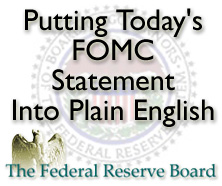Home Builder Confidence Rises in April
 The National Association of Home Builders (NAHB) reported that April’s Housing Market Index rose from a reading of 52 in March to 56 for April. This is in line with warmer weather and the peak home buying season in spring and summer. Readings over 50 indicate that more builders view market conditions as positive as those who do not. NAHB members cited lower mortgage rates and better labor market conditions as reasons they expect more home buyers to enter the market.
The National Association of Home Builders (NAHB) reported that April’s Housing Market Index rose from a reading of 52 in March to 56 for April. This is in line with warmer weather and the peak home buying season in spring and summer. Readings over 50 indicate that more builders view market conditions as positive as those who do not. NAHB members cited lower mortgage rates and better labor market conditions as reasons they expect more home buyers to enter the market.
All Components of Builder Confidence Increase
The NAHB Home Builder Index is calculated from three components. The reading for confidence in current housing market conditions rose from 58 in March to 61 in April. Builder confidence for sales condition in the next six months rose from a reading of 59 to 64, which was the highest reading for 2015 so far.
Home builder confidence in buyer foot traffic moved from 37 to a reading of 41 in April. Lingering winter weather likely kept house hunters indoors in many areas. NAHB Chief Economist David Crowe said that the uptick in the NAHB Housing Market Index indicates that housing market conditions can be expected to improve throughout 2015.
Regional Housing Results Mixed, Fed Beige Book Cites Winter Weather
NAHB measures regional changes in housing markets on a three-month rolling average. April’s results were mixed.
Builder confidence in the southern region increased from 55 to 56 in April. The northwestern region was unchanged from March to April at 42. Builder confidence in Midwestern housing markets fell by two points from 56 to 54. The western region saw builder confidence fall three points from the March reading of 61 to April’s reading of 58.
In an unrelated report, the Federal Reserve also released its Beige Book report which is a collection of anecdotes from business contacts throughout the nation. Winter weather conditions were prominently mentioned in the Beige Book report and were seen as detrimental for housing conditions.
The Beige Book report also mentioned layoffs caused by low oil and gas prices. This could negatively influence housing market conditions in regions where oil and gas provide many jobs and contribute to local economies.

 The minutes of the March meeting of the Fed’s Federal Open Market Committee (FOMC) were released Tuesday and included a staff review of current economic conditions. The minutes noted that while labor markets continued to grow, inflation to the Fed’s target rate of 2.00 percent was impeded by dropping fuel prices. The Committee noted that expectations for longer-term inflation remained stable.
The minutes of the March meeting of the Fed’s Federal Open Market Committee (FOMC) were released Tuesday and included a staff review of current economic conditions. The minutes noted that while labor markets continued to grow, inflation to the Fed’s target rate of 2.00 percent was impeded by dropping fuel prices. The Committee noted that expectations for longer-term inflation remained stable. The post-meeting statement of the Federal Reserve’s Federal Open Market Committee indicated that while the Federal Reserve is considering raising its target rate as early as June, the agency is in no hurry to cast anything in cement. The statement cited stronger labor markets and low unemployment rates as encouraging, but noted that FOMC members remain concerned about economic growth due to low inflation failing to meet the FOMC goal of two percent.
The post-meeting statement of the Federal Reserve’s Federal Open Market Committee indicated that while the Federal Reserve is considering raising its target rate as early as June, the agency is in no hurry to cast anything in cement. The statement cited stronger labor markets and low unemployment rates as encouraging, but noted that FOMC members remain concerned about economic growth due to low inflation failing to meet the FOMC goal of two percent.